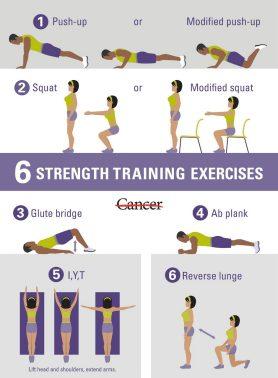In today’s fast-paced world, achieving a balanced body isn’t just a matter of aesthetics—it’s a cornerstone of overall health and well-being. Strength training, a pivotal component of fitness, offers a powerful pathway to sculpting a physique that is both resilient and harmonious. Whether you’re a seasoned athlete or a beginner embarking on your fitness journey, understanding how to effectively integrate strength training into your routine is essential. This article will guide you through the principles of building a balanced body, focusing on strength training techniques that enhance muscular symmetry, improve posture, and boost functional performance. With the right approach, you can transform your body into a well-tuned machine, ready to tackle any challenge life throws your way.
Mastering the Basics of Strength Training for a Balanced Physique
Building a well-rounded physique through strength training requires a solid understanding of foundational exercises and techniques. Focusing on compound movements is essential, as they engage multiple muscle groups and stimulate overall muscle growth. Key exercises to incorporate into your routine include:
- Squats – for building powerful legs and a strong core.
- Deadlifts – to enhance back strength and improve posture.
- Bench Press – to develop chest, shoulders, and triceps.
- Pull-Ups – for increasing upper body strength and grip.
- Overhead Press – to fortify shoulders and arms.
Consistency and progressive overload are crucial. Aim to gradually increase the weight you lift to challenge your muscles and avoid plateaus. Balance your workouts with proper rest and nutrition, ensuring your body has the resources to repair and grow. Remember, the key to a balanced physique lies not just in the exercises you choose, but in the commitment to your routine and listening to your body’s needs.
Incorporating Compound Movements for Optimal Muscle Growth
To achieve a well-rounded physique, it’s essential to focus on exercises that engage multiple muscle groups simultaneously. Compound movements are the cornerstone of any effective strength training program, as they stimulate greater muscle activation and enhance overall functional strength. Exercises such as squats, deadlifts, bench presses, and pull-ups not only promote muscle growth but also improve coordination and stability. These movements allow you to lift heavier weights, which in turn increases muscle fiber recruitment and growth potential.
Incorporating compound movements into your routine offers several benefits:
- Time Efficiency: Targeting multiple muscles at once means you spend less time in the gym while still achieving maximum results.
- Improved Core Strength: Many compound exercises require core stabilization, leading to a stronger midsection.
- Enhanced Hormonal Response: Engaging larger muscle groups triggers the release of growth-promoting hormones, such as testosterone and growth hormone.
For optimal muscle growth, ensure your training plan includes a balanced mix of compound movements tailored to your fitness level and goals. Prioritize proper form to minimize injury risk and maximize gains.

Creating a Tailored Workout Plan to Address Muscle Imbalances
Developing a workout routine that specifically targets muscle imbalances requires a keen eye for detail and a commitment to symmetry. Start by identifying the imbalances in your body—this could be a weaker side, limited range of motion, or one muscle group overpowering another. Assessments like single-leg squats, unilateral exercises, or professional evaluations can help pinpoint these discrepancies.
- Focus on unilateral exercises: Incorporate movements such as single-arm rows or single-leg deadlifts to ensure each side of the body is being worked evenly.
- Implement corrective exercises: Add exercises specifically designed to strengthen weak areas, such as band walks for hip stability or scapular retraction drills for shoulder alignment.
- Monitor your progress: Regularly reassess your strength and flexibility to ensure the imbalances are being addressed effectively.
Consistency is key in overcoming muscle imbalances. By regularly adjusting your workout plan to focus on these targeted exercises, you’ll be on the path to achieving a more balanced and harmonious physique.
Nutritional Strategies to Support Your Strength Training Goals
Maximizing your strength training efforts requires more than just a rigorous workout routine; it demands a strategic approach to nutrition. To ensure your body is fueled and ready for those intense lifting sessions, focus on incorporating lean proteins, complex carbohydrates, and healthy fats into your daily meals. Proteins such as chicken, fish, and plant-based alternatives like lentils and chickpeas are essential for muscle repair and growth. Meanwhile, whole grains and vegetables provide the necessary energy to power through demanding workouts.
- Protein Timing: Aim to consume protein-rich foods within 30 minutes post-workout to optimize muscle recovery.
- Hydration: Stay adequately hydrated to enhance performance and prevent fatigue. Water should be your go-to, but consider electrolyte-rich drinks if you’re engaging in prolonged training sessions.
- Micronutrients: Don’t overlook vitamins and minerals. Leafy greens, nuts, and seeds can boost your intake of essential nutrients like magnesium and vitamin D, crucial for muscle function and recovery.
Remember, a well-rounded diet not only supports your physical endeavors but also enhances overall health, allowing you to achieve a balanced and robust physique.




